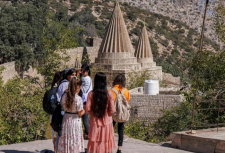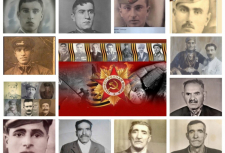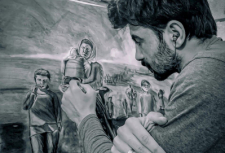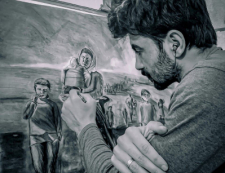Milete min Êzîd The Uniqueness of the Yazidi Concept of the Nation Part 2
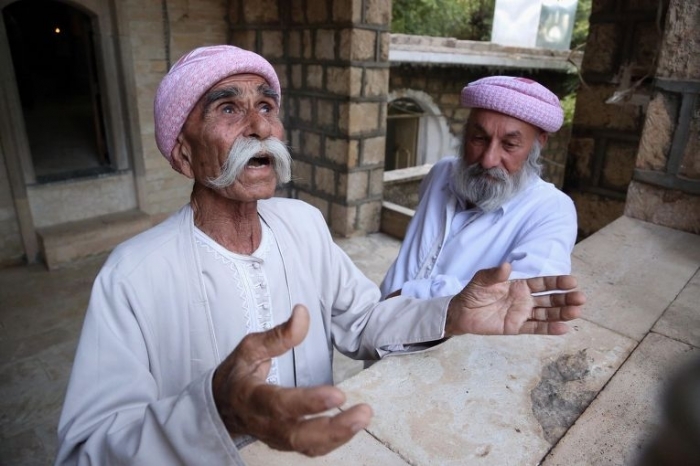
Artur Rodziewicz
Jagiellonian University,Kraków Poland
According to the Yazidi belief, they do not belong to this group, because they are a separate race or nation, the progeny of Adam alone, and more precisely his son, Shehid ben Jarr (and a houri named Layla), who was conceived without the participation of Eve (Spät 2002). The content of the Yazidi myths, which have been in force for centuries, clearly reflects their views about the relationship of their community to other groups. These beliefs are manifested in the strict prohibition of exogamy, entering into marriage with any of these 72 nations. Also, the number of genocides (ranging from 72 to 74) often cited by the Yazidis, originates from this ethnogeny myth and symbolically means that they were victims of all nations/non-Yazidis. Moreover, in traditional religious works, the Yazidis clearly distinguish their millet from others, such as Turks, Tatars, Arabs, Persians. However, it should be stressed here that in these works, there is no word about the Kurds. Significantly, apart from these millets, Christians and Jews are also mentioned. This shows that the term millet in the Yazidi tradition also defines the religious community. These millets are referred to, for example in the Yazidi Morning Prayer and The Hymn to Sheikh Shems. According to stanzas 24-33 of the Qewlê Şêşims (Kreyenbroek, Rashow 2005, p. 205, with my little corrections of their English translation):
Here Turke, here Tetere
Ew ẍafilêt bê nedere
Ewan jî Şêşims mfere
Here ‘Erebe, here ‘Eceme
Ewin ẍafilêt bê kereme
Ewan jî Şêşims pêşqedeme
File ku filene
Bi keşîş û abû nene
Ew jî li dû Şêşims diherine.
Cihû ku cihûne
Di selefxor û buxtan û nebûne
Ew jî bi Şêşims bi recûne [...]
Heftî û du milete
Heştî û duhezar xulayaqete
Şêşims hemûya mor dikete.
As stated above, the term “millet” originally referred to “religion” and “religious community”. The change of the use of this term was undoubtedly connected with the progressive secularization and the popularity of modern nationalistic ideologies. In case of the Yazidis, the word “millet”, as present in the formula “Milete min Êzîd”, is nowadays increasingly understood by them as an ethnic, national declaration, but in the previous centuries could mean just the “people of Yazid” or ‘those, who worship Yazid”. It did not necessarily suggest an ethnic qualification, especially if we take into consideration that the original Yazidi community was not ethnically homogeneous, but consisted of representatives of Kurdish tribes and Arabs such as Sheikh Adi and his family, and perhaps also of some local Assyrians. The first diversity was also present at the linguistic level. Arabic is the language of the oldest Yazidi written documents (secret and very few; Omarkhali 2017, p. 55-72), while the oral “documents” persisted in Kurmanji (permeated by Arabic vocabulary). Thinking about the language criterion as a determinant of nationality, it is worth remembering that although the majority of the Yazidis spoke and speak the Kurdish dialect of Kurmanji, the mother tongue of the inhabitants of Bashique and Bahzani (two important Yazidi villages in Iraqi Kurdistan Region) is still Arabic. In turn, as an effect of migration north, to Transcaucasia, the majority of the Yazidis living in the diaspora there, for several generations have spoken only Russian, Armenian and Georgian.
Understanding “millet” as an equivalent of “nation” in the case of the Yazidis can be seen as an effect of political and cultural pressure applied to the Yazidis to define themselves within the framework of modern ethnic terminology as well as their wish to join the global cultural discourse. This, from the perspective of Western evolutionist and modernist concepts, would indicate that at the moment the Yazidis are at the stage of transition from a religious shepherd community to modern urban society and of forming a “nation” in the Western sense of the word.
Tags:
Milete min Êzîd The Uniqueness of the Yazidi Concept of the Nation Part 2

Artur Rodziewicz
Jagiellonian University,Kraków Poland
According to the Yazidi belief, they do not belong to this group, because they are a separate race or nation, the progeny of Adam alone, and more precisely his son, Shehid ben Jarr (and a houri named Layla), who was conceived without the participation of Eve (Spät 2002). The content of the Yazidi myths, which have been in force for centuries, clearly reflects their views about the relationship of their community to other groups. These beliefs are manifested in the strict prohibition of exogamy, entering into marriage with any of these 72 nations. Also, the number of genocides (ranging from 72 to 74) often cited by the Yazidis, originates from this ethnogeny myth and symbolically means that they were victims of all nations/non-Yazidis. Moreover, in traditional religious works, the Yazidis clearly distinguish their millet from others, such as Turks, Tatars, Arabs, Persians. However, it should be stressed here that in these works, there is no word about the Kurds. Significantly, apart from these millets, Christians and Jews are also mentioned. This shows that the term millet in the Yazidi tradition also defines the religious community. These millets are referred to, for example in the Yazidi Morning Prayer and The Hymn to Sheikh Shems. According to stanzas 24-33 of the Qewlê Şêşims (Kreyenbroek, Rashow 2005, p. 205, with my little corrections of their English translation):
Here Turke, here Tetere
Ew ẍafilêt bê nedere
Ewan jî Şêşims mfere
Here ‘Erebe, here ‘Eceme
Ewin ẍafilêt bê kereme
Ewan jî Şêşims pêşqedeme
File ku filene
Bi keşîş û abû nene
Ew jî li dû Şêşims diherine.
Cihû ku cihûne
Di selefxor û buxtan û nebûne
Ew jî bi Şêşims bi recûne [...]
Heftî û du milete
Heştî û duhezar xulayaqete
Şêşims hemûya mor dikete.
As stated above, the term “millet” originally referred to “religion” and “religious community”. The change of the use of this term was undoubtedly connected with the progressive secularization and the popularity of modern nationalistic ideologies. In case of the Yazidis, the word “millet”, as present in the formula “Milete min Êzîd”, is nowadays increasingly understood by them as an ethnic, national declaration, but in the previous centuries could mean just the “people of Yazid” or ‘those, who worship Yazid”. It did not necessarily suggest an ethnic qualification, especially if we take into consideration that the original Yazidi community was not ethnically homogeneous, but consisted of representatives of Kurdish tribes and Arabs such as Sheikh Adi and his family, and perhaps also of some local Assyrians. The first diversity was also present at the linguistic level. Arabic is the language of the oldest Yazidi written documents (secret and very few; Omarkhali 2017, p. 55-72), while the oral “documents” persisted in Kurmanji (permeated by Arabic vocabulary). Thinking about the language criterion as a determinant of nationality, it is worth remembering that although the majority of the Yazidis spoke and speak the Kurdish dialect of Kurmanji, the mother tongue of the inhabitants of Bashique and Bahzani (two important Yazidi villages in Iraqi Kurdistan Region) is still Arabic. In turn, as an effect of migration north, to Transcaucasia, the majority of the Yazidis living in the diaspora there, for several generations have spoken only Russian, Armenian and Georgian.
Understanding “millet” as an equivalent of “nation” in the case of the Yazidis can be seen as an effect of political and cultural pressure applied to the Yazidis to define themselves within the framework of modern ethnic terminology as well as their wish to join the global cultural discourse. This, from the perspective of Western evolutionist and modernist concepts, would indicate that at the moment the Yazidis are at the stage of transition from a religious shepherd community to modern urban society and of forming a “nation” in the Western sense of the word.
Tags:




